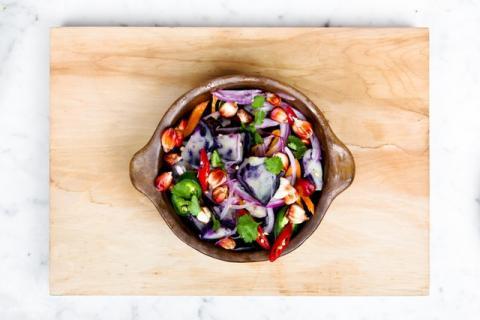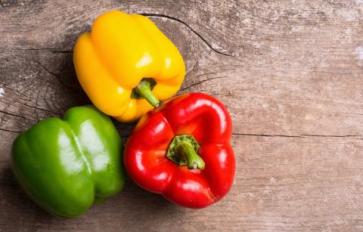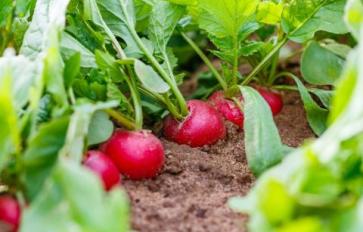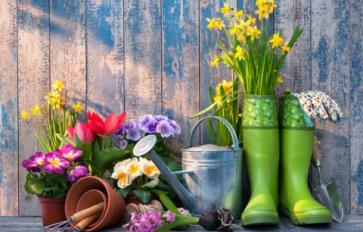
Rainbows are auspicious and always a delight to see, especially after a rainy day. The primary colors that comprise the rainbow -- red, orange, yellow, green, blue, indigo, and violet—can be seen all around us in the clothes we wear, the cars we drive, the art we enjoy and of course, in nature.
Color adds such vibrancy and energy into our everyday lives that it is difficult to imagine not being able to perceive the color spectrum. So many different colors surround us all the time that it is easy to take the various hues and pigmentations for granted! But what about using color as guide to eating?
Biologists believe that humans, like other animals, have evolved to see colors to aid in finding food on land and in the water. Nowadays, many of us get our food from restaurants, grocery stores and supermarkets. However, using color as an eating guide can still be useful.
Making sure that the plate of food I eat has a variety of naturally occurring colors found in vegetables, grains, fruits and legumes, is not only fun, but it is also aesthetically pleasing to the eye. If the eyes aren’t happy, then how can the stomach be? All of the senses are at play when it comes to eating.
However, eating a variety of colors found in plants goes beyond aesthetics, excitement and sensual pleasure. Eating a rainbow of colors is actually nutritionally intelligent and wise. The natural pigments found in fruits and vegetables such as carrots, squash, beets, eggplants, blueberries, blackberries, collard greens and tomatoes each have a different set of nutrients (minerals, vitamins) that the body needs for optimal health.
Essentially, each different naturally occurring pigment found in edible plants contains different nutritional components, which is why I try to incorporate the rainbow into all of the meals I eat. Here are some tips for adding more color to your plate:
- Make your plate like a piece of artwork. Most people appreciate visual art because of how color is used. Have fun and get creative with your meals; make your plate of food pop with color and energy.
- Be thoughtful and strategic with meal planning. If you always buy the same combination of foods, try deviating from your routine and adding different types of vegetables and fruits with the intention of adding more color to your meals.
- Add more plants and vegetables to your plate. Most of the richest and most vibrant color found in foods comes from plants. A lot of research shows that eating a diet high in vegetables and fiber leads to less disease and increased longevity. Some of my favorite colorful and rare edible plants are blue potatoes, rainbow Swiss chard, lemon cucumbers, and black rice.
Many of us are very privileged to live in a society that is abundant in food. Yes, there are a lot of unhealthy and cheap food options available to us at any given moment. But I strive to live according to the old saying by the ancient Greek philosopher Hippocrates, “Let food be thy medicine and medicine be thy food.” Consuming a diverse diet, rich in the colors of the rainbow, ensures that my body is getting all of the minerals, vitamins and nutrition it needs to keep me healthy, strong and vibrant.








